Discovery opens the door to generate electricity from bacteria
New research demonstrates for the first time the exact molecular structure of the proteins which enable bacterial cells to transfer electrical charge.
May 23rd, 2011
Read more
New research demonstrates for the first time the exact molecular structure of the proteins which enable bacterial cells to transfer electrical charge.
May 23rd, 2011
Read more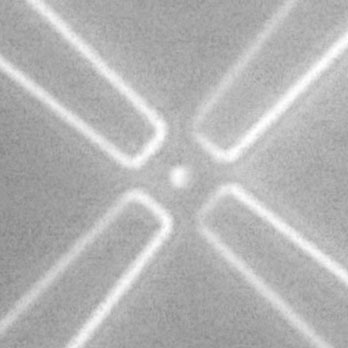 A team led by Yale University researchers has proven that isolating individual charged particles, like DNA molecules, is indeed possible using a method called "Paul trapping", which uses oscillating electric fields to confine the particles to a space only nanometers in size.
A team led by Yale University researchers has proven that isolating individual charged particles, like DNA molecules, is indeed possible using a method called "Paul trapping", which uses oscillating electric fields to confine the particles to a space only nanometers in size.
May 23rd, 2011
Read more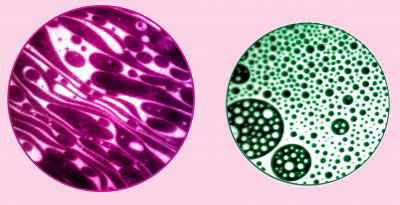 Laboratory studies by chemical engineers at UC Santa Barbara may lead to new experimental methods for early detection and diagnosis - and to possible treatments - for pathological tissues that are precursors to multiple sclerosis and similar diseases.
Laboratory studies by chemical engineers at UC Santa Barbara may lead to new experimental methods for early detection and diagnosis - and to possible treatments - for pathological tissues that are precursors to multiple sclerosis and similar diseases.
May 23rd, 2011
Read moreElectrical engineers at Duke University have determined that unique man-made materials should theoretically make it possible to improve the power transfer to small devices, such as laptops or cell phones, or ultimately to larger ones, such as cars or elevators, without wires.
May 23rd, 2011
Read more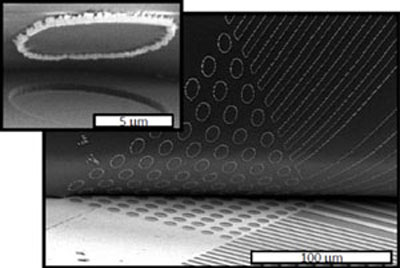 Scientists from Argonne's Center for Nanoscale Materials's Nanofabrication Group, working with users from the University of Wisconsin-Stevenson Point, discovered a fast, simple, scalable technique for solution-based, electrochemical synthesis of patterned metallic and semiconducting nanowires from a reusable, nonsacrificial, ultrananocrystalline diamond (UNCD) template.
Scientists from Argonne's Center for Nanoscale Materials's Nanofabrication Group, working with users from the University of Wisconsin-Stevenson Point, discovered a fast, simple, scalable technique for solution-based, electrochemical synthesis of patterned metallic and semiconducting nanowires from a reusable, nonsacrificial, ultrananocrystalline diamond (UNCD) template.
May 23rd, 2011
Read more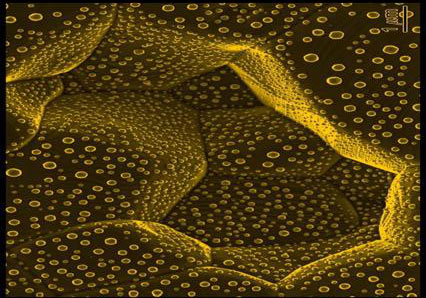 Researchers at the Technion have discovered the nature of nanometer-thick layers between different materials and found that they have both solid and liquid properties. By doing so, the researchers made a crucial addition to Gibbs' theory which describes the fundamental aspects of the thermodynamics of interfaces.
Researchers at the Technion have discovered the nature of nanometer-thick layers between different materials and found that they have both solid and liquid properties. By doing so, the researchers made a crucial addition to Gibbs' theory which describes the fundamental aspects of the thermodynamics of interfaces.
May 23rd, 2011
Read moreDas Oeko-Institut stellt mit dem Nano-NachhaltigkeitsCheck ein Instrument vor, mit dem eine einheitliche Bewertung der Nachhaltigkeitspotenziale von Nanoprodukten moeglich wird. Damit steht erstmals ein einheitliches Raster zur Verfuegung, um Umweltbe- oder -entlastungen, aber auch Risiken und Herausforderungen fuer die Markteinfuehrung von Produkten mit Nanomaterialien zu identifizieren.
May 23rd, 2011
Read moreIt will perhaps be possible, in the near future, to detect cancer by a simple blood or urine test. In fact, biologists from CNRS, Inserm, Paris Descartes and Strasbourg universities have developed a technique capable of detecting minute traces of tumoral DNA present in the biological fluids of patients suffering from cancer. The method consists in carrying out ultra-sensitive molecular analyses in microscopic droplets.
May 23rd, 2011
Read more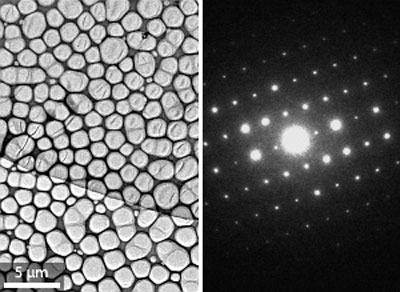 One of the most striking properties of graphene is arguably its two-dimensionality. The remarkable electronic behavior realized by this two-dimensionality has prompted researchers to try and form similar two-dimensional sheets from other materials. Wenping Hu and colleagues from the Beijing National Laboratory for Molecular Sciences in China have now succeeded in growing two-dimensional crystals of an organic semiconductor on large scales and on various types of substrate with a view to developing advanced organic electronic devices.
One of the most striking properties of graphene is arguably its two-dimensionality. The remarkable electronic behavior realized by this two-dimensionality has prompted researchers to try and form similar two-dimensional sheets from other materials. Wenping Hu and colleagues from the Beijing National Laboratory for Molecular Sciences in China have now succeeded in growing two-dimensional crystals of an organic semiconductor on large scales and on various types of substrate with a view to developing advanced organic electronic devices.
May 23rd, 2011
Read more The yellow hue of a series of samples from wall paintings in several Mayan archaeological sites can be attributed to the presence of indigoid compounds, including isatin and dehydroindigo, attached to palygorskite, a local phyllosilicate clay. SEM/EDX, TEM, UV/Vis spectroscopy, and voltammetry of microparticles show that the ancient Mayas could prepare indigo, Maya Blue, and "Maya Yellow" during successive stages.
The yellow hue of a series of samples from wall paintings in several Mayan archaeological sites can be attributed to the presence of indigoid compounds, including isatin and dehydroindigo, attached to palygorskite, a local phyllosilicate clay. SEM/EDX, TEM, UV/Vis spectroscopy, and voltammetry of microparticles show that the ancient Mayas could prepare indigo, Maya Blue, and "Maya Yellow" during successive stages.
May 23rd, 2011
Read more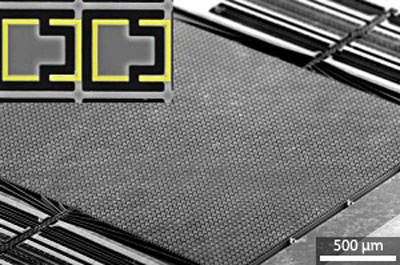 Ai-Qun Liu from Nanyang Technological University in Singapore and colleagues from Singapore, Taiwan, France and Hong Kong have prepared a metamaterial with optical properties that can be switched dynamically using micromachined actuators.
Ai-Qun Liu from Nanyang Technological University in Singapore and colleagues from Singapore, Taiwan, France and Hong Kong have prepared a metamaterial with optical properties that can be switched dynamically using micromachined actuators.
May 23rd, 2011
Read moreThe physical forces that guide how cells migrate - how they manage to get from place to place in a coordinated fashion inside the living body - are poorly understood. Scientists have, for the first time, devised a way to measure these forces during collective cellular migration. Their surprising conclusion is that the cells fight it out, each pushing and pulling on its neighbors in a chaotic dance, yet together moving cooperatively toward their intended direction.
May 22nd, 2011
Read moreResearchers at the University of California, Los Angeles have discovered a way to "wake up" the immune system to fight cancer by delivering an immune system - stimulating protein in a nanoscale container called a vault directly into lung cancer tumors. The new method harnesses the body's natural defenses to fight disease growth.
May 20th, 2011
Read moreChemical engineers at the Massachusetts Institute of Technology have designed a new type of drug-delivery nanoparticle that exploits a trait shared by almost all tumors: They are more acidic than healthy tissues. Such particles could target nearly any type of tumor, and can be designed to carry virtually any type of drug.
May 20th, 2011
Read moreA class of engineered nanoparticles - gold-centered spheres smaller than viruses - has been shown safe when administered by two alternative routes in a mouse study led by investigators at the Stanford University Medical School. This marks the first step up the ladder of toxicology studies that, within a year and a half, could yield to human trials of the tiny agents for detection of colorectal and possibly other cancers.
May 20th, 2011
Read moreNanotechnology researchers have known for years that RNA, the cousin of DNA, is a promising tool for nanotherapy, but the difficulties of producing long-lasting, therapeutic RNA that remains stable and non-toxic while entering targeted cells have posed challenges for their progress. Now, in two papers published in the journal Molecular Therapy, a team of investigators details their method for producing RNA nanoparticles and testing their safety in the delivery of therapeutics to targeted cells.
May 20th, 2011
Read more